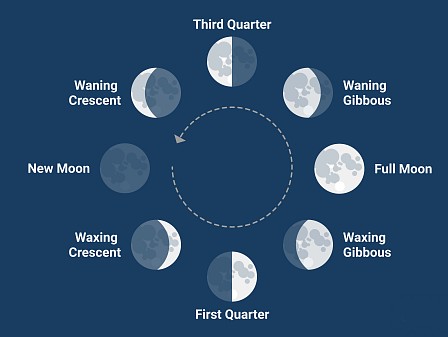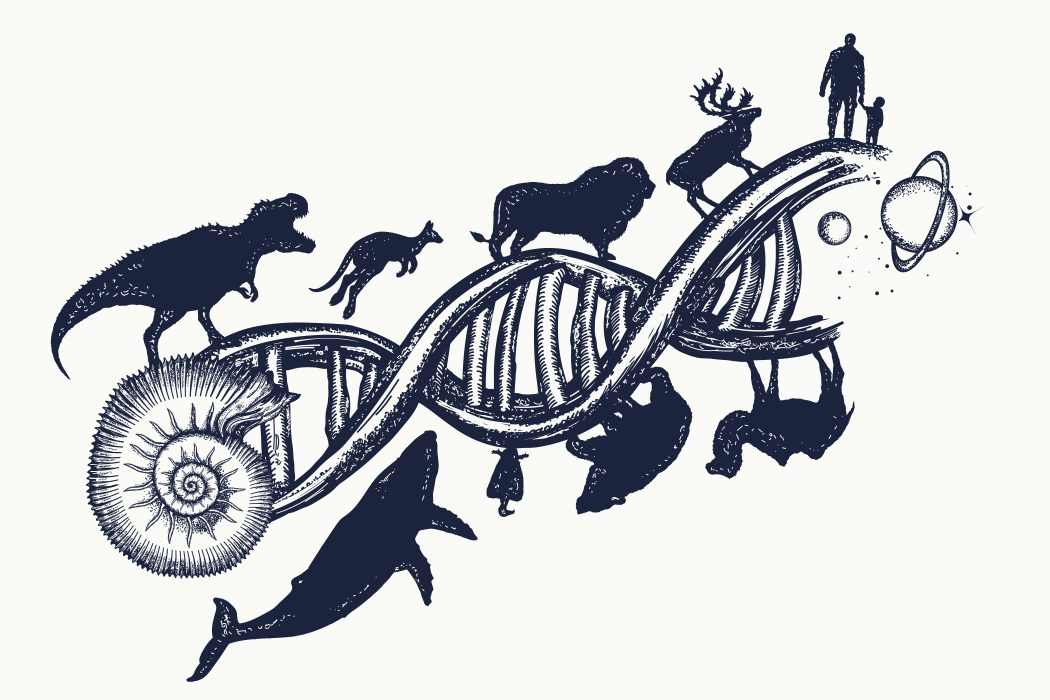One of the most prominent features of the night sky is our Moon. The way the Moon looks constantly changes in a predictable pattern. We call these changes phases. What are the phases of the moon, and what causes them?
There are eight phases of the moon, and they are: New Moon, Waxing Crescent, First Quarter, Waxing Gibbous, Full Moon, Waning Gibbous, Last Quarter, and Waning Crescent. The cycle of phases takes about 29.5 days to complete.
The phase of the moon is determined by the percentage of the moon’s illuminated surface that is visible to us from Earth. During a new moon, the entire illuminated side of the moon is facing away from us, so we see no moon at all. As the moon orbits around Earth, the illuminated side starts to become more and more visible, until we see a full moon. Then, the illuminated side starts to become less and less visible, until we see a new moon again.
The cause of the phases of the moon is the relative positions of the Earth, Moon, and Sun. The phases are caused by the changing angle at which we see the illuminated side of the moon. When the sun, Earth, and moon are lined up, we see a new moon. As the moon orbits around Earth, we see more and more of the illuminated side.
Let’s look at each of the eight phases starting with new moon.
New moon : The sun, Earth, and moon are lined up. The entire illuminated side of the moon is facing away from us, so we see no moon at all.
Waxing crescent: The sun, Earth, and moon are not lined up. We can see a small portion of the illuminated side of the moon. This phase gets its name from the fact that it appears to be growing, or waxing.
First quarter: The sun, Earth, and moon are not lined up. We can see half of the illuminated side of the moon. This phase gets its name because it occurs about a week after the new moon, or one quarter of the way through the lunar cycle.
Waxing gibbous: The sun, Earth, and moon are not lined up. We can see more than half of the illuminated side of the moon. This phase also gets its name from the fact that it appears to be growing, or waxing.
Full moon: The sun, Earth, and moon are lined up. The entire illuminated side of the moon is facing toward us, so we see a full moon.
Waning gibbous: The sun, Earth, and moon are not lined up. We can see more than half of the illuminated side of the moon. This phase gets its name from the fact that it appears to be shrinking, or waning.
Last quarter: The sun, Earth, and moon are not lined up. We can see half of the illuminated side of the moon. This phase gets its name because it occurs about a week before the new moon, or one quarter of the way through the lunar cycle.
Waning crescent: The sun, Earth, and moon are not lined up. We can see a small portion of the illuminated side of the moon. This phase also gets its name from the fact that it appears to be shrinking, or waning.
The moon itself doesn’t actually change. It is just the amount of light we can see that is changing.






